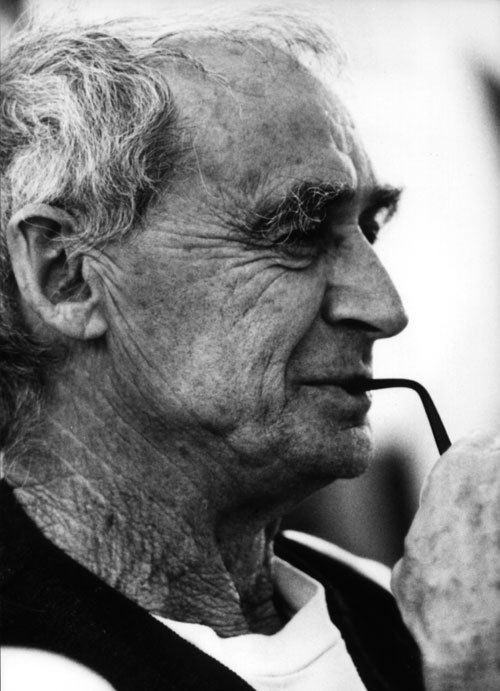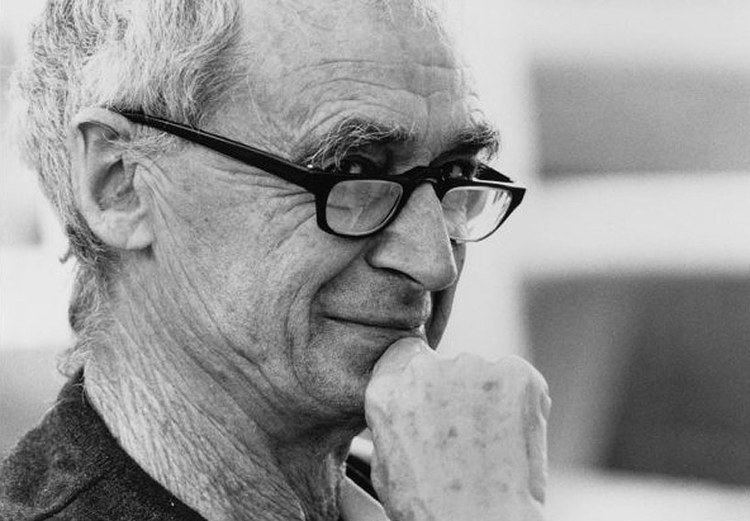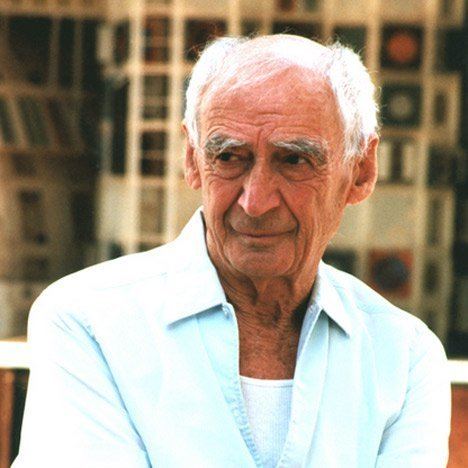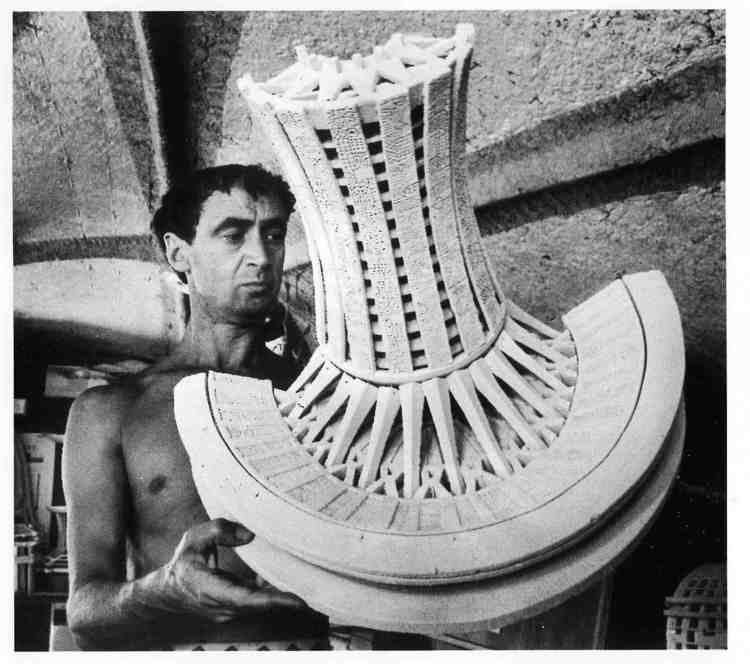Nationality ItalianAmerican Role Architect Occupation Architect | Name Paolo Soleri | |
 | ||
Awards 1963 – American Institute of Architects Gold Medal for Craftmanship2000 – Leone d'oro at the Venice Biennale of Architecture Books Arcology, Arcosanti: An Urban Laboratory? Movies Citizen Of The Planet, Paolo Soleri: Beyond Form, Great Expectations Similar People Frank Lloyd Wright, John Lautner, Eric Avery, Leonardo DiCaprio, G Homer Durham | ||
Architecture ahead of its time the paolo soleri amphitheater conrad skinner tedxabq
Paolo Soleri (21 June 1919 – 9 April 2013) was an Italian architect. He established the educational Cosanti Foundation and Arcosanti. Soleri was a lecturer in the College of Architecture at Arizona State University and a National Design Award recipient in 2006. He died at home of natural causes on 9 April 2013 at the age of 93.
Contents
- Architecture ahead of its time the paolo soleri amphitheater conrad skinner tedxabq
- Paolo soleri
- Early life
- Arcosanti
- Other achievements
- Awards
- References

Soleri authored six books, including The Omega Seed, "Arcology - City In the Image of Man," and numerous essays and monographs.

Paolo soleri
Early life
Soleri was born in Turin, Italy. He was awarded his "laurea" (master's degree) in architecture from the Politecnico di Torino in 1946. He visited the United States in December 1946 and spent a year and a half in fellowship with Frank Lloyd Wright at Taliesin West in Arizona, and at Taliesin in Spring Green, Wisconsin. During this time, he gained international recognition for a bridge design that was displayed at the Museum of Modern Art.

In 1950 Soleri, with his wife Colly (née Corolyn Woods), returned to Italy where he was commissioned to build a large ceramics factory, Ceramica Artistica Solimene, in Vietri on the Amalfi coast.

He adapted ceramics industry processes learned at this time to use in his award-winning designs and production of ceramic and bronze windbells and silt-cast architectural structures. For more than 40 years, proceeds from sales of the wind-bells have been an important source of funds for construction that is meant to test his theoretical work. Ceramic and bronze bells continue to be produced and sold at Arcosanti and Cosanti in Arizona.

In 1956 he settled in Scottsdale, Arizona, with Colly and the elder of their two daughters; the younger was born in AZ. He began building Arcosanti in 1970 with the help of architecture and design students, as a place to test his urban design hypotheses. This "urban laboratory" (so-dubbed by Ada Louise Huxtable, who at the time was the architectural critic of The NY Times) became internationally renowned.
Paolo and Colly Soleri made a lifelong commitment to research and experimentation in urban planning. They established the Cosanti Foundation, a 501-3C educational non-profit foundation. Soleri's philosophy and works were strongly influenced by the Jesuit paleontologist and philosopher Pierre Teilhard de Chardin.
Soleri died on 9 April 2013 and was buried at Arcosanti in its private cemetery, beside his wife.
Arcosanti
The Cosanti Foundation's major project is Arcosanti. Arcosanti, as originally designed by Soleri, was intended for 5,000 people; it has been in construction since 1970. Located near Cordes Junction, about 70 miles (110 km) north of Phoenix and visible from Interstate I-17 in central Arizona, the intention of the project is to provide a model that can demonstrate Soleri's concept of "Arcology", architecture coherent with ecology. Arcology was envisioned by Soleri as a hyper-dense city, designed to: maximize human interaction with ready access to shared, cost-effective infrastructural services; conserve water and reduce sewage; minimize the use of energy, raw materials and land; reduce waste and environmental pollution; increase interaction with the surrounding natural environment. In 2010, construction was underway to complete Arcosanti's Greenhouse Apron but that initiative was put on hold not long after Soleri's death in 2013.
Arcosanti is intended as a prototype of a desert arcology. Soleri's other arcology designs envisioned sites such as the ocean (Nova Noah), et al. (see: Arcology: City in the Image of Man). Since 1970, over 7000 people have participated in Arcosanti's construction. Their international affiliation group is called the Arcosanti Alumni Network [<https://arcosanti.org/node/30>].
Other achievements
The International Architecture Symposium "Mensch und Raum" (Man and Space) at the Vienna University of Technology in 1984 received international attention. Paolo Soleri participated with, among others: Justus Dahinden, Dennis Sharp, Bruno Zevi, Jorge Glusberg, Otto Kapfinger, Frei Otto, Pierre Vago, Ernst Gisel and Ionel Schein.
Soleri was a distinguished lecturer in the College of Architecture at Arizona State University and a member of the Lindisfarne Association.
In 1966, Paolo Soleri began working on the design for the Paolo Soleri Amphitheater in Santa Fe, New Mexico. It was built for the IAIA (Institute of American Indian Arts) on what is now the campus of the Santa Fe Indian School using large silt cast forms. The property is owned by the nineteen Native American Pueblos of New Mexico and is therefore not protected by local or state preservation laws.
A landmark exhibition, "City in the Image of Man - The Architectural Visions of Paolo Soleri", organized in 1970 by the Corcoran Gallery of Art in Washington, DC, traveled extensively thereafter in the U.S. and Canada, breaking records for attendance. "Two Suns Arcology, A Concept for Future Cities" opened in 1976 at the Xerox Square Center in Rochester, New York. In 1989, "Paolo Soleri Habitats: Ecologic Minutiae," an exhibition of arcologies, space habitats and bridges, was presented at the New York Academy of Sciences. More recently, "Soleri's Cities, Architecture for the Planet Earth and Beyond" was featured at the Scottsdale Center for the Arts in Scottsdale, AZ. A Soleri bell appears in the film What the *Bleep* Do We Know? His work has been exhibited worldwide.
Also in 1976, Paolo Soleri was a key participant at UN Habitat I, the first UN forum on human settlements, held it Vancouver, BC; he appeared there together with Buckminster Fuller.
The Paolo Soleri Archives, the collection of Soleri's drawings and writings, is located at Arcosanti. The Soleri Archives is managed by Sue Kirsch under the direction of Tomiaki Tamura, a Cosanti Board Trustee and Arcosanti's Director of Special Projects. Tomiaki Tamura resides at Arcosanti.
Soleri was interviewed in the 2007 environmental documentary "The 11th Hour (2007 film)".
December 10, 2010, saw the completion of Soleri Bridge and Plaza, which was commissioned by Scottsdale Public Art. The 130-foot (40 m) pedestrian bridge based on Paolo Soleri's design is located on the South Bank of the Arizona Canal and connects a developed retail area of the Scottsdale Waterfront with Old Town Scottsdale. The bridge is incorporated into a 22,000 sq ft (2,000 m2) plaza including silt cast artwork and a large bell assembly called The Goldwater Bell, also designed by Paolo Soleri.
The (2013) feature-length documentary film The Vision Of Paolo Soleri: Prophet In The Desert contains interviews with Morley Safer, Paul Goldberger, Catherine Hardwicke, Will Bruder, Jean-Michel Cousteau, Steven Holl and Eric Lloyd Wright.
Awards
Soleri received fellowships from the Graham Foundation and from the Guggenheim Foundation (1964, Architecture, Planning, & Design). He was awarded three honorary doctorates and several awards from design groups worldwide:
